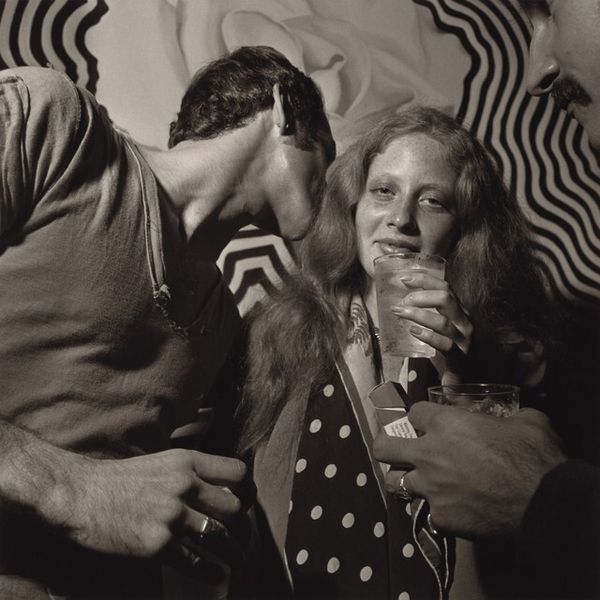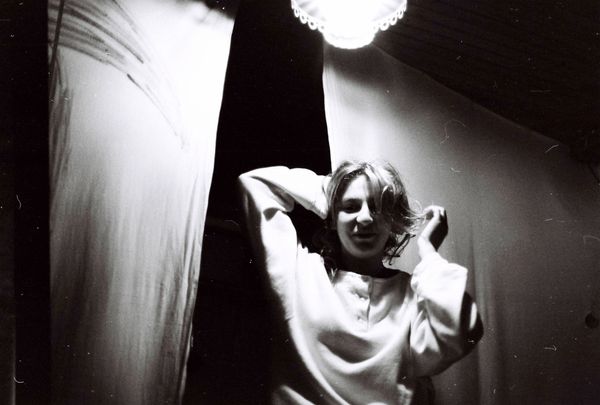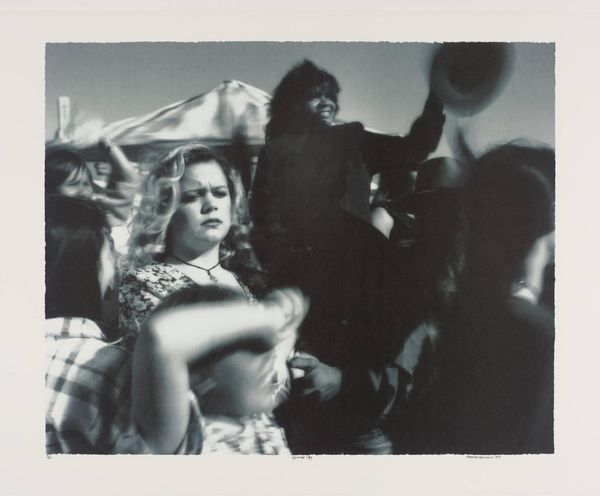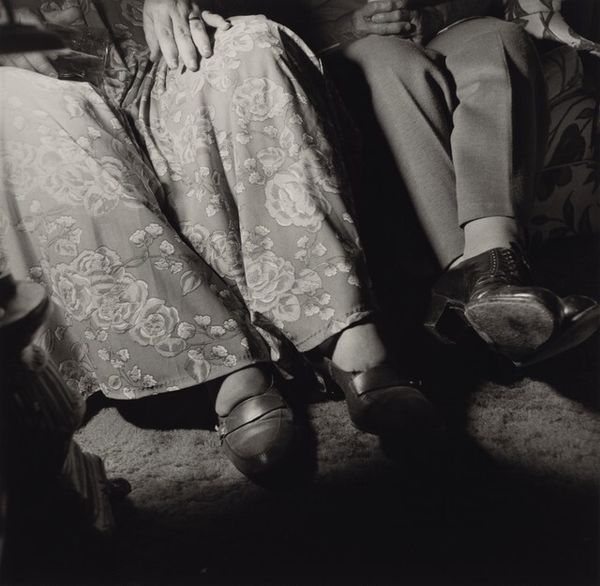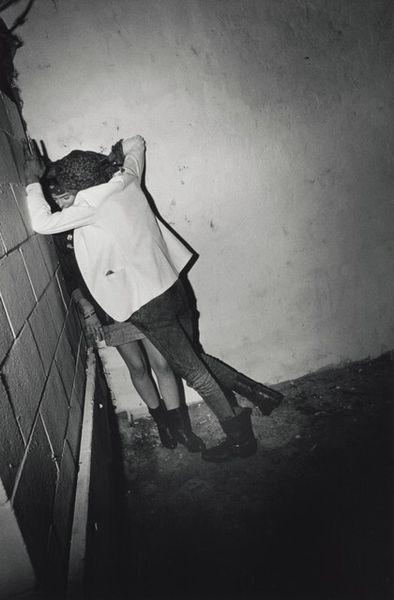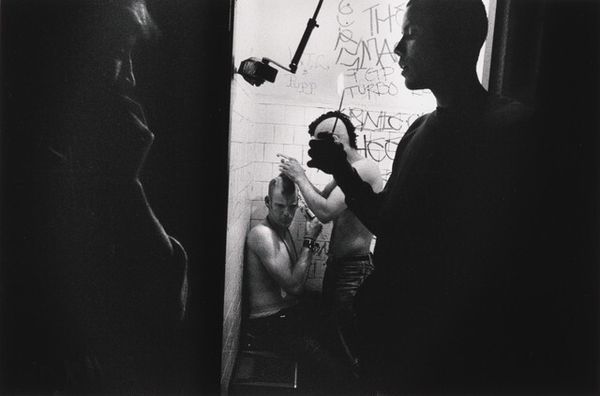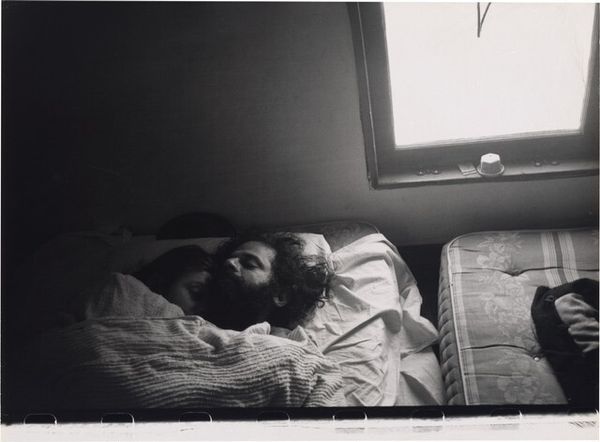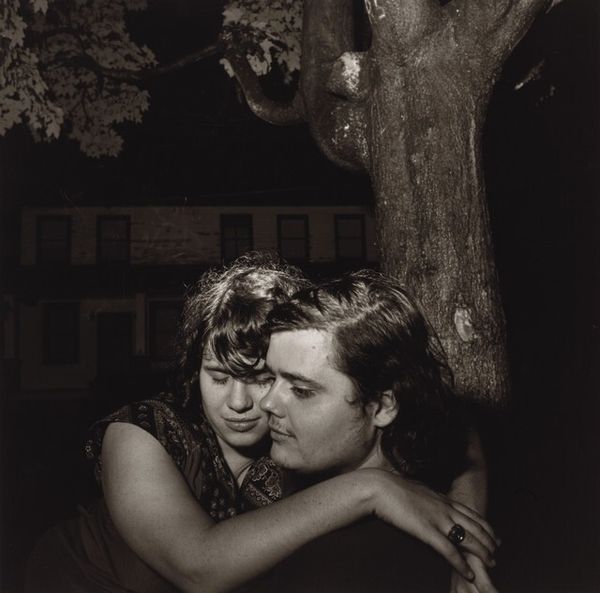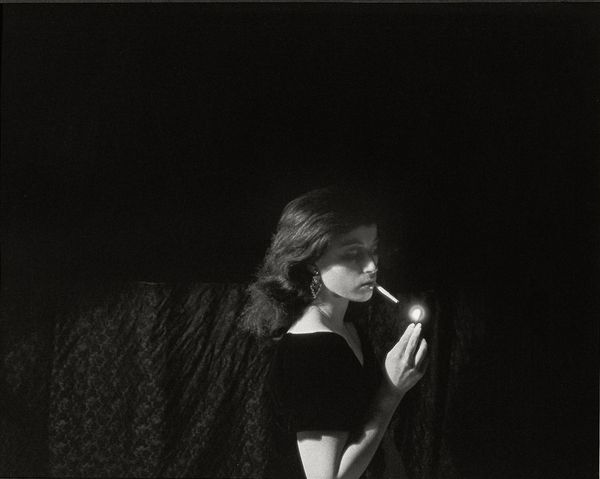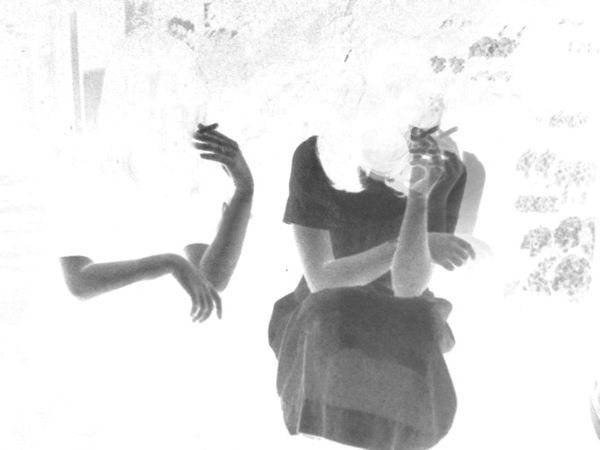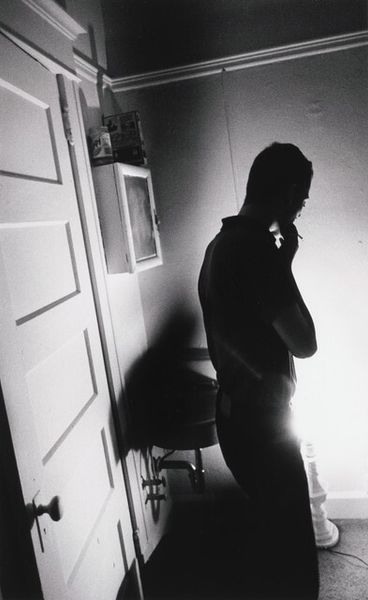
photography, gelatin-silver-print
#
black and white photography
#
cool tone monochrome
#
black and white format
#
social-realism
#
street-photography
#
b w
#
photography
#
black and white theme
#
black colour
#
black and white
#
gelatin-silver-print
#
monochrome photography
#
monochrome
#
realism
#
exhibition
Dimensions: sheet: 27.9 × 35.2 cm (11 × 13 7/8 in.) image: 25.3 × 32.4 cm (9 15/16 × 12 3/4 in.)
Copyright: National Gallery of Art: CC0 1.0
Curator: Jim Goldberg’s "Dave and Cookie Jonesin'," likely from the late 1980s or early 1990s, rendered in gelatin silver print, confronts us with raw emotion. Editor: My first impression is intensity. The tight framing, the stark contrast… It feels like we're intruding on a private moment, or maybe a cry for help. There’s an overwhelming weight to it. Curator: Note how the composition is almost aggressively direct. The harsh flash, the starkness of the monochrome...all enhance that sense of immediacy. The texture too is essential, especially regarding that personalized, graffitied jacket. Semiotically, the layering of inscriptions becomes significant. Editor: Absolutely. Contextually, Goldberg often worked with marginalized communities, exploring themes of poverty and addiction. Is the writing on the jacket some kind of coded language or testament of their lives? What were their personal relationships with Jim, considering he was on the front lines with some heavy communities? The institutional framing matters too. Where would you usually find images like this in the early 90's? What societal dialogues were happening, and how did images like this change them? Curator: Precisely! The materiality speaks volumes. The stark contrast in values renders an uneasy depth to the jacket’s surface. It seems to create almost another skin. These are not passive portraits; there is clearly intention here. What are your eyes drawn to? Editor: The woman's gaze. It's hauntingly direct. She’s almost accusatory, implicating the viewer in their reality. But then I see that jacket again, plastered with what seems like lyrics, poetry or drug-slang; then, it begins to look a piece of performative defiance? And that makes her look like she's in protection of it. The institutional setting has changed the photograph’s meaning; from a dark story to a moment. It makes you question who gets to display the intimate, marginalized moments and why. Curator: The way that our attention is deliberately fractured by Goldberg across the wall, her expression, the markings is what brings everything together so powerfully. The photograph uses these forms to reveal, perhaps, an attempt to conceal, making the entire artwork a powerful tableau of inner conflict, societal angst and a story untold. Editor: Absolutely. By examining the work this closely, we get the opportunity to engage with history through lived experience, rather than detached statistics.
Comments
No comments
Be the first to comment and join the conversation on the ultimate creative platform.
